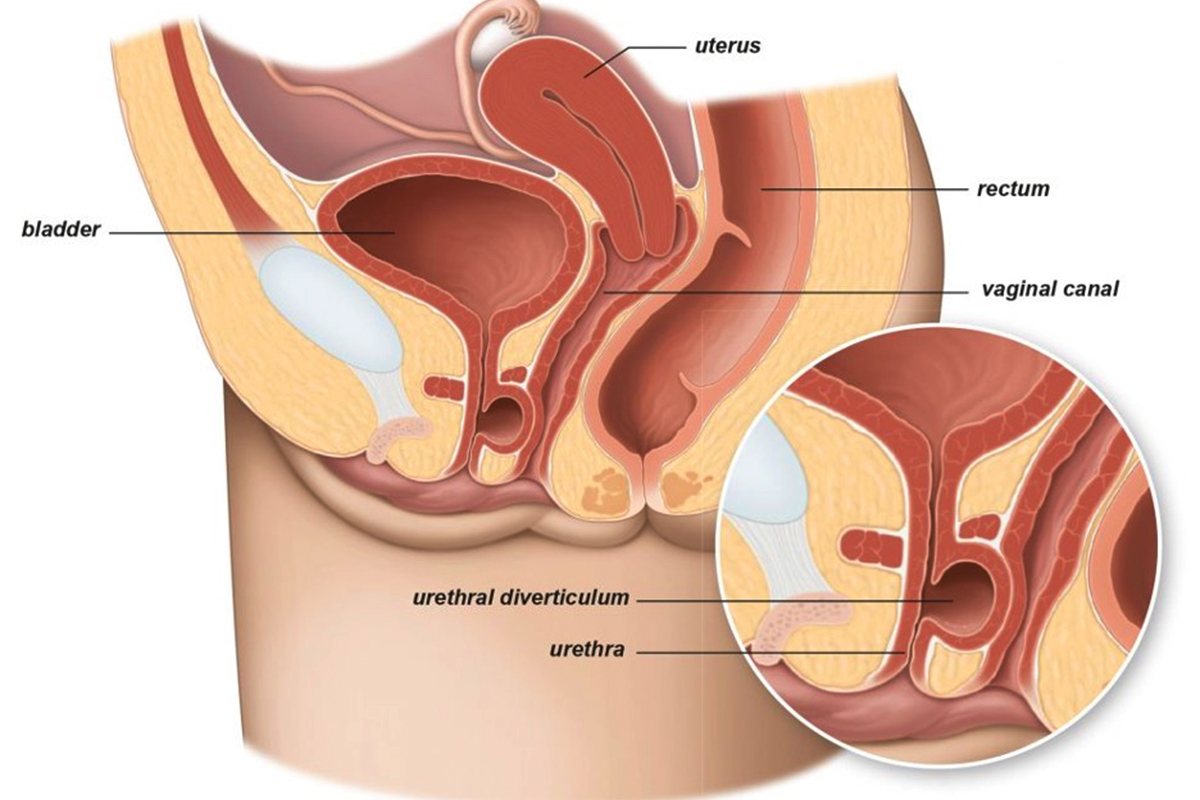What are the symptoms of a urethral diverticulum?
Urethral diverticulum symptoms can vary depending on the size and location of the diverticulum, as well as whether it is infected. Common symptoms include:
- Frequent Urination: Increased urge to urinate or frequent trips to the bathroom.
- Urinary Incontinence: Leakage of urine that is not controlled.
- Painful Urination: Discomfort or pain during urination.
- Postvoid Dribbling: Leakage of urine after urination is completed.
- Vaginal Discharge: Sometimes associated with a purulent or bloody discharge from the vagina.
- Pelvic Pain: Discomfort or pain in the pelvic region.
- Dyspareunia: Painful intercourse.
- Urinary Tract Infections (UTIs): Recurrent infections can occur due to the diverticulum.
- Swelling or Tenderness: Swelling or tenderness in the vaginal area may be noticed upon examination.
The symptoms can be similar to other conditions affecting the urinary tract, so a thorough evaluation by a healthcare provider is essential for an accurate diagnosis.
What are the causes of a urethral diverticulum?
Urethral diverticulum can develop due to various causes, including:
- Trauma or Injury: Trauma to the urethra, such as from childbirth or pelvic surgery, can lead to the formation of a diverticulum.
- Chronic Infection: Repeated urinary tract infections (UTIs) or chronic inflammation can cause the urethra to weaken and form a diverticulum.
- Urethral Stricture: Narrowing of the urethra from scarring can contribute to the development of a diverticulum.
- Congenital Abnormalities: Some individuals may be born with anatomical anomalies that predispose them to developing a urethral diverticulum.
- Post-Surgical Complications: Surgeries involving the urinary tract, such as pelvic surgery or certain procedures for incontinence, may lead to the formation of a diverticulum.
- Hormonal Changes: In some cases, hormonal changes, particularly after menopause, may influence the development of a diverticulum.
Understanding the underlying cause is crucial for effective management and treatment of a urethral diverticulum.
What is the treatment for urethral diverticulum?
Treatment for a urethral diverticulum typically involves surgical intervention to correct the problem and relieve symptoms. The specific approach depends on the size and location of the diverticulum, as well as the presence of any associated complications. Here’s an overview of common treatment options:
- Surgical Excision: The primary treatment for a urethral diverticulum is surgical removal. This procedure involves excising the diverticulum and repairing the urethra. It is usually done through a minimally invasive approach, such as endoscopic surgery, or through open surgery, depending on the complexity of the diverticulum.
- Antibiotics: If the diverticulum is associated with an infection, antibiotics may be prescribed to treat any urinary tract infections or other bacterial infections before or after surgery.
- Supportive Care: In some cases, supportive care, such as pain management and pelvic floor exercises, may be recommended to help manage symptoms and promote healing.
- Follow-Up Care: Regular follow-up appointments are important to monitor for any recurrence of the diverticulum and to ensure proper healing of the urethra. This may include imaging studies or endoscopic evaluations.
- Management of Complications: If the diverticulum has led to other complications, such as urinary incontinence or pelvic pain, additional treatments may be necessary to address these issues.
Early diagnosis and treatment are important to prevent complications and improve outcomes.

Leave a Reply
You must be logged in to post a comment.